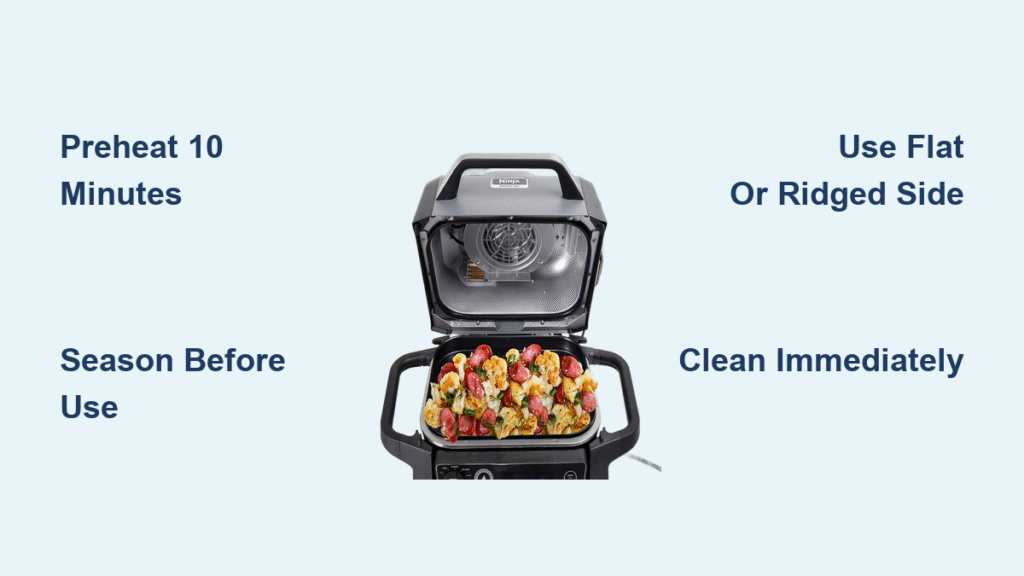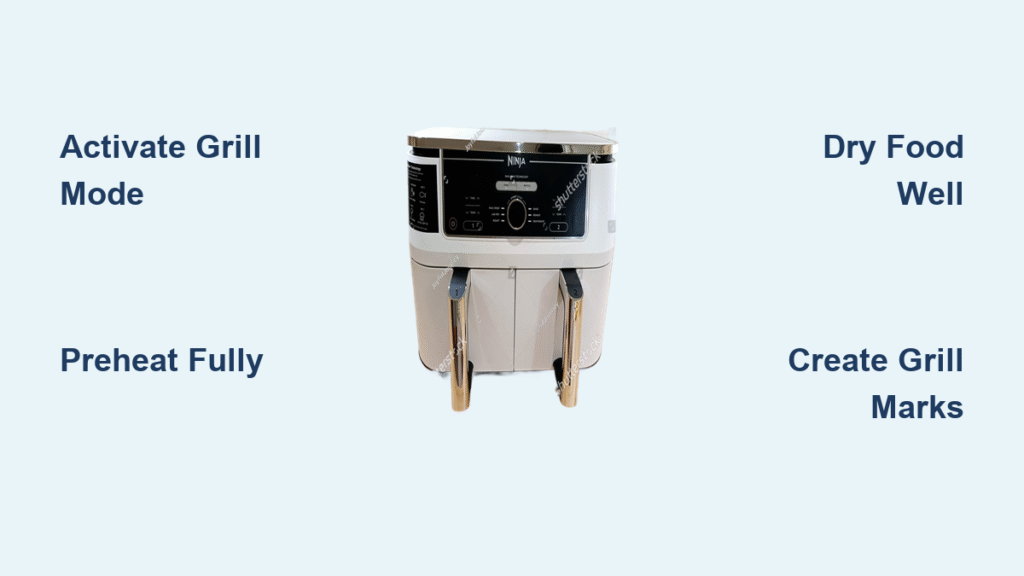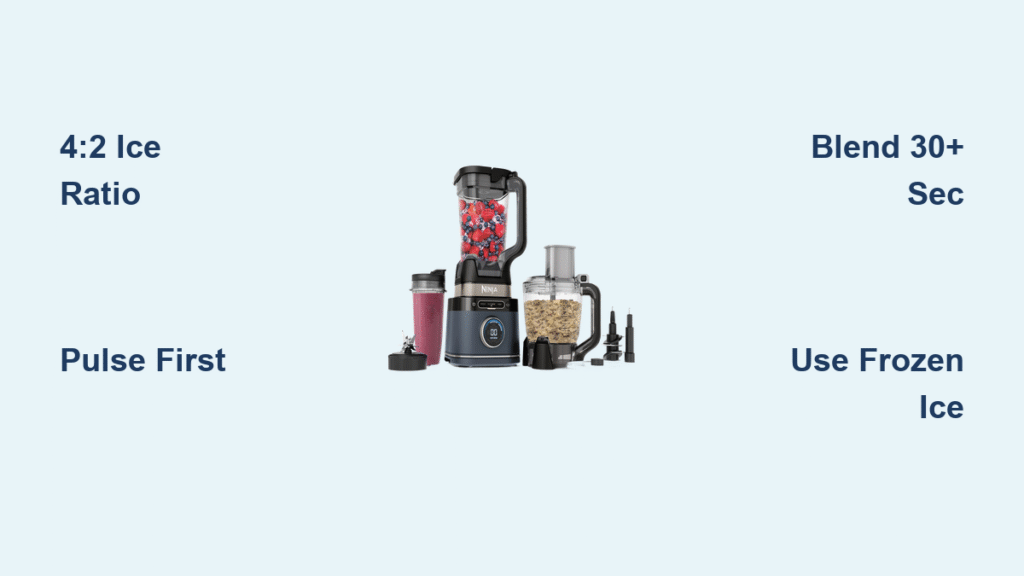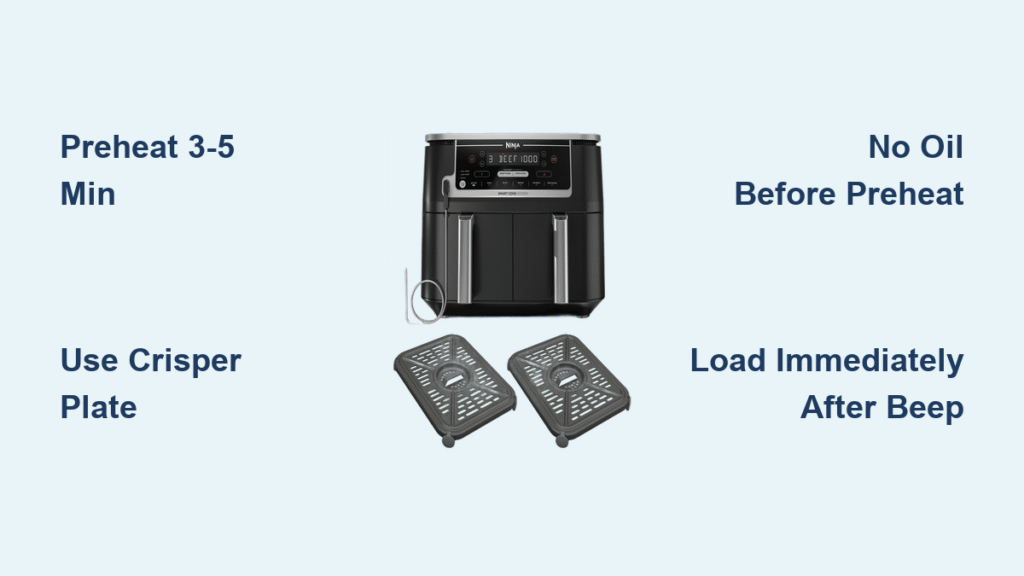That flat, reversible griddle plate in your Ninja Foodi accessory box isn’t just another piece of metal—it’s your ticket to restaurant-quality breakfasts, perfect sear marks, and weeknight dinners that defy your countertop grill’s limits. Mastering how to use Ninja Foodi grill griddle plate transforms your indoor grill from a single-purpose appliance into a versatile cooking powerhouse. Whether you’re battling stuck eggs or chasing crosshatch marks on burgers, this guide cuts through the confusion with precise, actionable steps verified across all compatible models.
Stop wondering why your pancakes tear or smoke alarms trigger during steak night. Within minutes, you’ll know exactly how to position the plate, set temperatures for specific foods, and troubleshoot sticking without damaging the surface. Forget generic manuals—this is the real-world playbook for unlocking every capability of your Ninja Foodi griddle plate, from first-seasoning to pro-level two-zone cooking.
Initial Setup and Seasoning

Unbox and Wash First
Immediately remove all plastic packaging and adhesive labels—residues cause smoke during first use. Hand-wash with warm, soapy water using a non-abrasive sponge (no steel wool!). Rinse thoroughly to eliminate soap traces that create bitter flavors. Dry completely with a microfiber towel; air-drying invites water spots that compromise the non-stick surface. Skipping this step risks contaminating your first meals with factory oils.
Season Before First Use
Critical for non-stick performance: Apply a paper-thin oil layer (canola or avocado oil works best) across both sides using a paper towel. Insert into your unplugged grill, close the lid, and set to 400°F for 10 minutes. This polymerizes the oil into a protective barrier—never skip seasoning or you’ll battle stuck food immediately. After cooling, wipe excess oil with a clean cloth. Repeat monthly for lasting performance.
Check Model Compatibility
Your griddle plate only fits:
– FG551 (Smart XL series)
– AG301 (5-in-1 models)
– All XL Pro variants
Verify your model number under the grill base. Forcing it into incompatible units creates dangerous gaps where heat escapes unevenly, risking warping or electrical hazards. If unsure, consult Ninja’s online compatibility chart—never assume fitment.
Proper Griddle Placement
Remove Existing Grate
Unplug the unit and confirm it’s completely cool (15+ minutes). Lift the standard grill grate straight up—never twist—to avoid damaging internal tabs. Store it in a safe spot; you’ll swap back for traditional grilling. Attempting placement on a warm unit risks burns and misalignment.
Align and Secure
Position the griddle plate with its rear tabs sliding into the grill’s mounting slots. Press down firmly until it sits perfectly flush—no wobbling. Test stability by gently nudging the edges; if movement occurs, lift and reseat. An unstable plate creates hot spots that burn food and strain heating elements.
Choose Your Surface
Flat side up: Pour delicate batters like pancakes or eggs directly onto the surface.
Ridged side up: Flip the entire plate to sear steaks, burgers, or vegetables.
Never cook on both sides simultaneously—the ridged side requires direct contact with heating elements. For crosshatch marks, place proteins at a 45-degree angle to the ridges before rotating 90 degrees mid-cook.
Temperature Mastery Guide
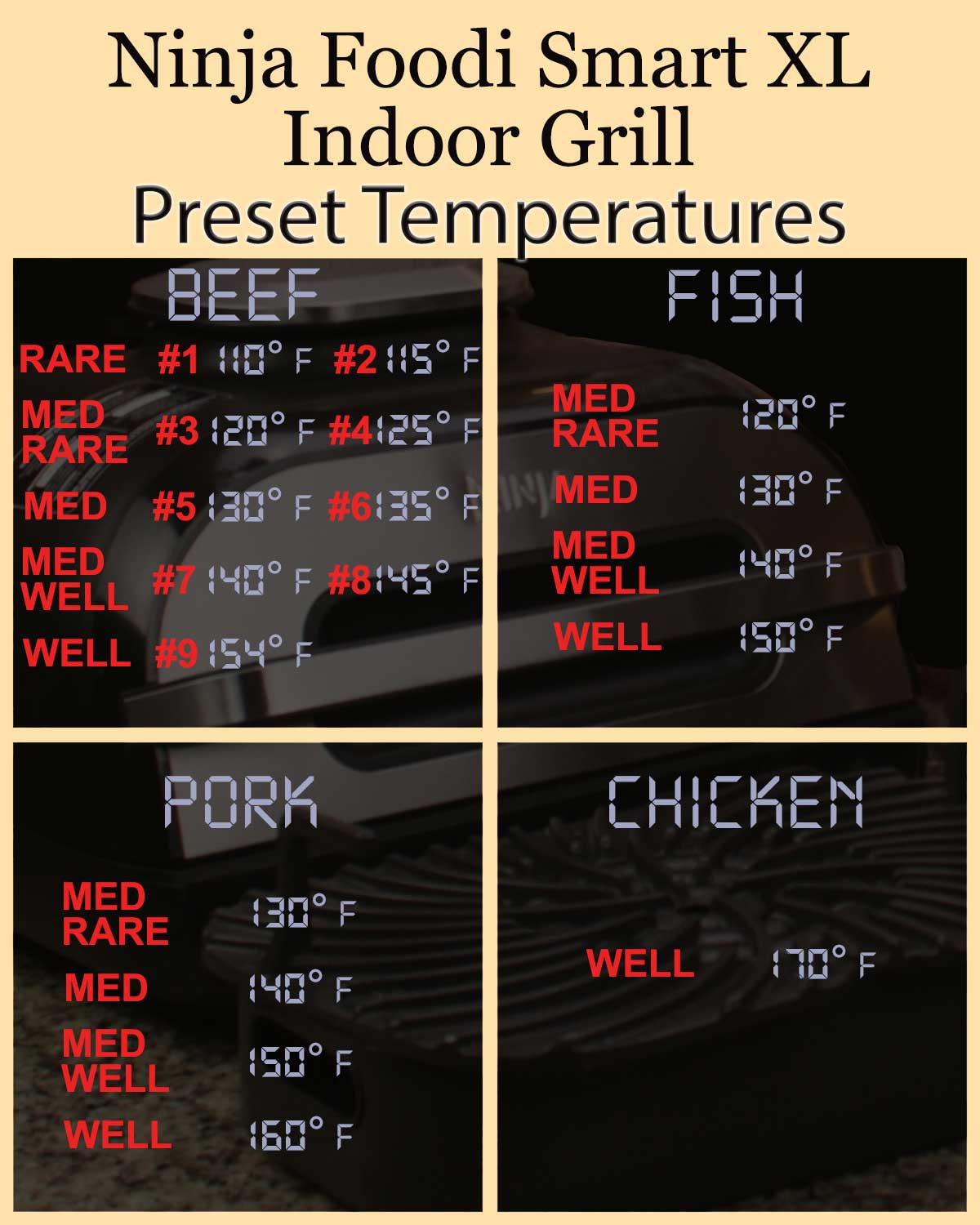
Preheating Protocol
Close the lid and set to 400°F for 8-10 minutes—this is non-negotiable. The griddle must reach thermal saturation for even cooking. Test readiness by flicking water droplets: they should sizzle violently and vanish in 2 seconds. Under-preheating causes sticking; over-preheating smokes oil.
Heat Zones by Food Type
| Food | Temp (°F) | Time | Pro Tip |
|---|---|---|---|
| Eggs | 350 | 2-4 min | Use butter, not oil |
| Pancakes | 375 | 2-3 min/side | Wait for surface bubbles |
| Smash burgers | 450 | 2-3 min/side | Smash patties immediately |
| Bacon | 400 | 6-8 min | Start on cold plate for rendering |
| Fish fillets | 375 | 3-4 min/side | Pat dry thoroughly first |
Reading Your Food
A healthy sizzle means ideal heat—silence indicates under-preheating. If edges char before centers cook, your temp is too high. Watch the oil: It should shimmer but not smoke. Adjust in 25°F increments; Ninja Foodi griddles respond fast.
Cooking Techniques That Impress
Perfect Pancakes Every Time
At 375°F, pour batter when water droplets “dance” on the surface. Wait for bubbles to cover 70% of the pancake and edges to look set—this is your flip signal. The second side cooks in 60-90 seconds. Over-flipping causes tearing; use a thin metal spatula for clean release.
Restaurant-Quality Smash Burgers
Form 3-4 oz balls of 80/20 ground chuck. At 450°F, place balls on the griddle and smash instantly with a stiff spatula to ½-inch thickness. Cook undisturbed 2-3 minutes until edges caramelize. Flip once, add cheese, and rest 3 minutes. Skipping the smash step = no crispy edges.
Master the Crosshatch
Flip to ridged side and preheat to 450°F for 12 minutes. Place steaks at a 45-degree angle to the ridges. After 3-4 minutes, rotate 90 degrees (don’t flip!) for diamond marks. Flip once to finish. Key: Don’t move meat until it releases naturally—yanking rips fibers.
Cleaning Like a Pro
Immediate Post-Cook Care
Unplug and cool 15-20 minutes (never clean while hot!). While warm, scrape residue with a plastic spatula—never metal—then wipe with paper towels. This removes 80% of grease before it hardens. Ignoring this step forces harsh scrubbing later.
Deep Cleaning Method
Hand-wash with warm, soapy water and a soft sponge. For stuck bits, apply baking soda paste and soak 10 minutes. Never use:
– Dishwasher (warps the plate)
– Steel wool (scratches the coating)
– Oven cleaner (eats non-stick surface)
Dry immediately with a lint-free cloth to prevent rust.
Storage Secrets
Store completely dry and flat—never stack heavy items on top. Before long-term storage, coat with a whisper-thin oil layer to prevent oxidation. Wrap in a cotton towel (not paper) to avoid moisture traps.
Troubleshooting Common Issues
Food Sticking Solutions
Problem: Eggs glue to the surface.
Fix: Extend preheat to 12 minutes and use clarified butter (regular butter burns at 350°F).
Prevention: Season monthly by heating to 400°F with 1 tsp oil for 10 minutes.
Uneven Heating Fixes
Problem: Burnt spots in the center.
Cause: Warped plate from thermal shock (e.g., cold water on hot metal).
Solution: Place griddle on a glass table—if light gaps show underneath, replace it.
Smoke Control
Cause: Oil pooling in ridges or leftover grease.
Solution: After cooking, wipe ridges with a folded paper towel held by tongs. Always run your range hood—Ninja’s smoke point is 425°F for most oils.
Advanced Chef Techniques
Two-Zone Cooking Method
Set one side to 450°F (searing zone) and the other to 325°F (finishing zone). Sear steaks on high heat, then move to the cooler side to reach target doneness without charring. Ideal for thick-cut proteins.
Batch Cooking Mastery
After removing cooked items, let the griddle reheat 2-3 minutes before adding new food. Use the grill’s “Keep Warm” function at 170°F for finished portions. Cook longer items (like sausages) first, then quick-cooking veggies.
Safety First, Always
Heat Protection
Always wear silicone gloves when handling the griddle plate—even after 20 minutes of cooling. Maintain a 12-inch clearance around the unit; steam vents at the front can scald skin. Never leave unattended with children nearby.
Food Safety Rules
Use separate spatulas for raw meat and finished food. Check chicken at 165°F internally—never guess. Clean the griddle between protein types to prevent cross-contamination.
Performance Optimization
Maximizing Sear Marks
Preheat 15 minutes for true restaurant heat. Pat proteins bone-dry—moisture is the enemy of browning. Use minimal oil: brush it on the food, not the griddle. Resist moving food for the first 3 minutes.
When to Replace
Replace immediately if:
– Visible warping (check on a flat countertop)
– Rust spots appear despite drying
– Food sticks consistently after proper seasoning
A damaged plate risks uneven cooking and potential safety hazards.
Your Ninja Foodi griddle plate isn’t just an accessory—it’s the key to 10x more meals from one appliance. Start with foolproof pancakes using the flat side, then graduate to crosshatch-seared steaks on the ridges. Remember: perfect preheating, strategic oiling, and patient flipping transform good cooks into griddle masters. Clean it right, store it dry, and you’ll chase that first-seasoning non-stick magic for years. Now fire up your grill—breakfast (or smash burgers) await.

